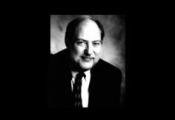The Passion for Jewish Reading Part 4
Rabbi Dov Gartenberg September 7, 2005
One of my goals in establishing Panim Hadashot-New Faces of Judaism was to reestablish Jewish learning as the centerpiece of Jewish community. This meant a rediscovery of the joy of reading, learning, and dialogue as a way for promoting fellowship. The mitzvah of Torah study has always been considered equal to all the commandments. But Torah study in its finest and most authentic sense had to be presented to people in a way that could transform and deepen their lives.
The scholar Sven Birkets has written about the nature of reading which captures the unique quality of Torah study I am seeking to reestablish in the liberal Jewish community. In this fourth part I want to share more of Birkets insights on the comparison of how people read in the past and how we read in our high tech reality.
"In our culture, access is not a problem, but proliferation is. And the reading act is necessarily different than it was in the earliest days. Awed and intimidated by the availability of texts, faced with the impossible task of discriminating among them, the reader tends to move across surfaces, skimming, hastening from one site to the next without allowing the words to resonate inwardly."
When I was a kid I was taught the Evelyn Wood method of quick reading. In school I was taught to read a lot and to cover a lot of ground in a quick amount of time. Only much later did I learn to read the old way, to digest a text, to pour over words, to reflect on their meaning.
Birkets continues, "The possiblity of maximum focus is undercut by the awareness of the unread texts that await. The result is that we know countless more 'bits' of information both important and trivial, than our ancestors. We know them without a stable sense of context, for where the field is that vast, all schemes must be seen as provisional. "
My question became, how do we reestablish focus in Jewish life. Synagogues attempt to establish focus liturgically, by bringing people together over a common set of prayers and pulic readings which are repeated week after week (except for the Torah reading). Panim seeks to bring people together with an even sharper focus on the weekly reading of the Torah. The act of slow, 'ferocious' reading is done with everyone present and creates a stable yet very engaging experience of learning and exploration.
Birkets continues, "We are experiencing in our times a loss of depth-a loss, that is, of the very paradigm of depth. A sense of the deep and natural connectedness of things is a function of vertical consciousness. Its apotheosis is what was once called wisdom. Wisdom: the knowing not of facts, but of truths about human nature and the processes of life. But swamped by data, and in thrall to the technologies that manipulate it, we no longer think in these larger and necessarily more imprecise terms. "
The Torah reading which we call Shivim Panim Latorah-70 Faces of the Torah- is a conscious attempt to rediscover 'vertical consciousness' and to engage in a form of reading that gives us a chance to reflect on human nature, on God, on the attempt to live life purposefully. Because of the specificity of the Torah, we can approach these themes in many different ways. Because of the rich tradition of commentary, we have profound pundits (as opposed to the contemporary retail industry of the same name) who engage in the important questions about the meaning and message of the text. A holy text as I understand it is something that yields up the minerals and raw materials in which we build a house of wisdom. Why not allow time in our lives to live intimately with this text.
"Wisdom", Birkets adds, "and ideal that originated in the oral epochs-Solomon and Socrates represent wisdom incarnate, ...is predicated on the assumption that one person can somehow grasp a total picture of life and its laws, comprehending the whole and the relation to the parts. To comprehend: to "hold together".
When we read Torah we are engaged in a shared act of holding together, both by reading the same text and by engaging with it and plumbing it for wisdom. This is a spiritual act as a Jew. Yes we can use the same time to pray, to meditate, to sing. These are also fine spiritual activities, but Jews saw the collective act of seeking wisdom and insight through the slow reading of Torah to be the greatest spiritual act, worthy of the reward of eternal life. Panim attempts to revive the Torah reading as a form of slow, vertical, depth reading that Birkets describes so beautifully.
In part 5 I will continue commenting on Birkets marvelous insights focusing on the impact of data overload and the impact on how we read in our times.
Rabbi Dov Gartenberg

Subscribe to:
Post Comments (Atom)

No comments:
Post a Comment